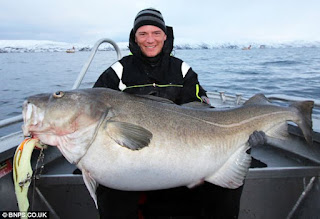© 2022 Christy K Robinson
This article is copyrighted. Copying, even to your genealogy pages, is prohibited by US and international law. You may "share" it with the URL link because it preserves the author's copyright notice and the source of the article.
All rights reserved. This book or blog article, or any portion thereof may not be reproduced or used in any manner whatsoever without the express written permission of the author except for the use of brief quotations in a book review.
A 2017 article in Atlas Obscura pointed out the nasty foods and drinks consumed by ships' crews in the 17th century: decomposing brined beef and cod, dirty water, hardtack biscuits, and sour beer. Seasickness had less to do with motion than spoiled provisions. But what did the passengers eat and drink on the ships which carried them from Great Britain and Europe to North America? Voyages lasted a minimum of eight weeks, and up to 12 weeks if they fought winds, currents, or hurricanes.
 |
| Coopers making barrels for ship cargo. |
Most passengers and their servants probably consumed similar fare of salted meat, or a stew of pease if they were lucky. Only three days into the 1630 voyage of the Winthrop Fleet, while the fleet’s occupants were fasting and praying, some farm laborers they’d brought “pierced a rundlet of strong water” (a 15-gallon barrel of whisky used primarily for medicinal purposes), and were put in "a bolt" (probably tied or chained to part of the ship) for a night and day to punish them.
A servant made a private deal with a boy (presumably the ship’s boy) to purloin three biscuits a day from the communal food supply, and upon discovery, the servant was tied to a bar and had a basket of stones placed around his neck for two hours. A maidservant, being seasick, drank so much whisky that she was “senseless, and had near killed herself. We observed it a common fault in our young people, that they gave themselves to drink hot waters [whisky] very immoderately.”
 |
| Lucky angler Marten Hvam has recently broken the record for the biggest cod caught in Europe, with a specimen that measured 4ft 9ins long and tipped the scales at 91lbs 15ozs. https://www.dailymail.co.uk/news/article-2148477/Angler-catches-largest-cod-fish-caught-Europe-weighing-whopping-91lb.html |
Running low on provisions after 12 weeks at sea, the Winthrop Fleet stopped to fish for fresh cod off Maine, and hauled in huge fish of a hundred pounds each, 67 on one day, and 36 on another. They made fires in sand-bottomed braziers on the ships' decks and cooked their fish for immediate feasting and to store for the remainder of the voyage.
Going back ten years to the Mayflower voyage, some historians speculate that the illness that killed half the passengers and crew in the winter and spring of 1620-21 was scurvy or some other severe nutrition deficiency. The Endecott Fleet in 1629 and the Winthrop Fleet in 1630 had terrible disease outbreaks and hundreds of immigrants died of fever or nutrition deficiencies in their first months on land. In February 1631, at a time when ships rarely crossed the Atlantic in winter because of violent storms, Captain Pearce brought desperately needed foods to Boston, along with "a store of lemons" that was needed to combat scurvy. Citrus is high in Vitamin C, which helps cure scurvy symptoms.
For people who were accustomed to dining on poultry, cheese, fish, pigeon pie, bread, root vegetables and leafy greens, ship fare could be a daunting prospect.

No comments:
Post a Comment
Reasonable, thoughtful comments are encouraged. Impolite comments will be moderated to the recycle bin. NO LINKS or EMAIL addresses: I can't edit them out of your comment, so your comment will not be published. This is for your protection, and to screen out spam and porn.